From A to Z, there are a wide range of plants that start with the letter V with unusual, fascinating, and downright bizarre names. While some are easy to pronounce, some are derived from Latin words and can, therefore, be pretty difficult to get your tongue around.
Just as interesting as the names themselves, many plants are intriguing once you start to study them in greater detail.
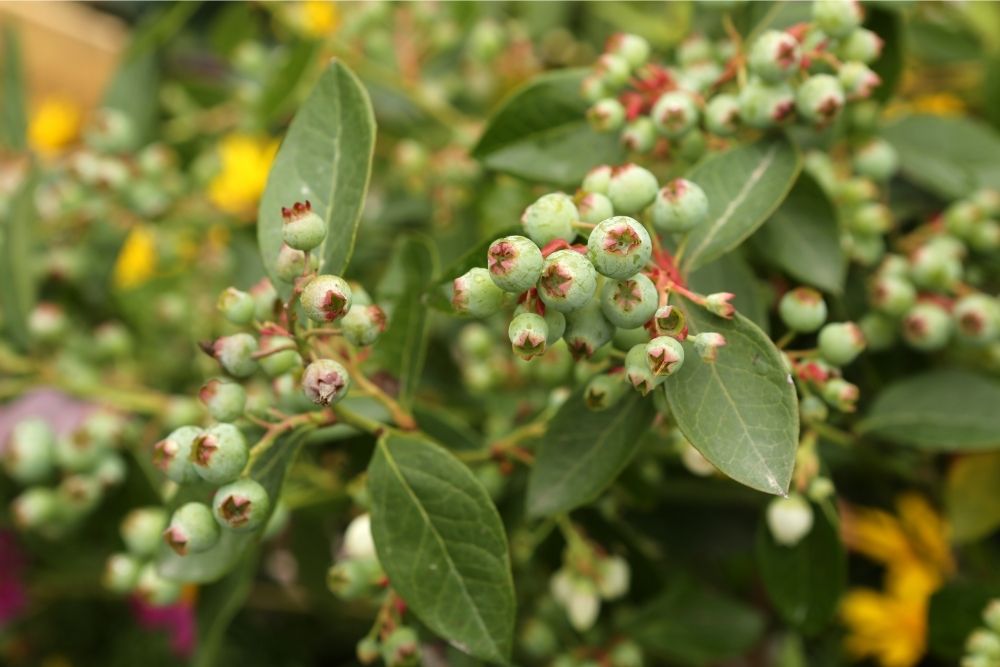
Whether it’s a perennial or an annual plant, there are many that start with the letter V. But, trying to figure them all out on your own can be almost impossible. That is why we have compiled a list of plants that start with the letter V.
If you simply love all things about plants and you’re working your way through the alphabet of plants, then you are in the right place. By the end of this blog, you will be able to distinguish plants beginning with V from others and hopefully find some that you can grow in your backyard.
12 Plants That Start With The Letter V
1. Vaccinium

We start our list with an evergreen shrub, the vaccinium. With different species in the vaccinium family, sun exposure and required water vary with these plants.
However, one thing for certain is that vaccinium plants make for excellent ornamental shrubs. These boast small clusters of bell-shaped flowers as well as colorful fruit that is edible and attracts all kinds of birds.
These shrubs range from small ground coverings to the heights of small trees. Mostly grown for decorative landscaping projects, vaccinium plants require rich, organic, acid soil.
2. Valerian

Also referred to as Jupiter’s Beard, valerian plants are perennials that enjoy full sun and partial shade. These plants are also drought tolerant and require only a moderate amount of water to grow. Valerian is a trouble-free plant that is found in the Mediterranean.
As a perennial, small parachutes of seeds help it be prolific self-sower. When grown, valerian forms a thick clump that reaches up to three feet in height and width. Its upright stems can grow to four inches long with bluish-green leaves.
Once it blossoms during late spring or early summer, it boasts rose-pink and/or faded crimson flowers that reach around 12 inches in length.
3. Variegated Indian Holly Fern
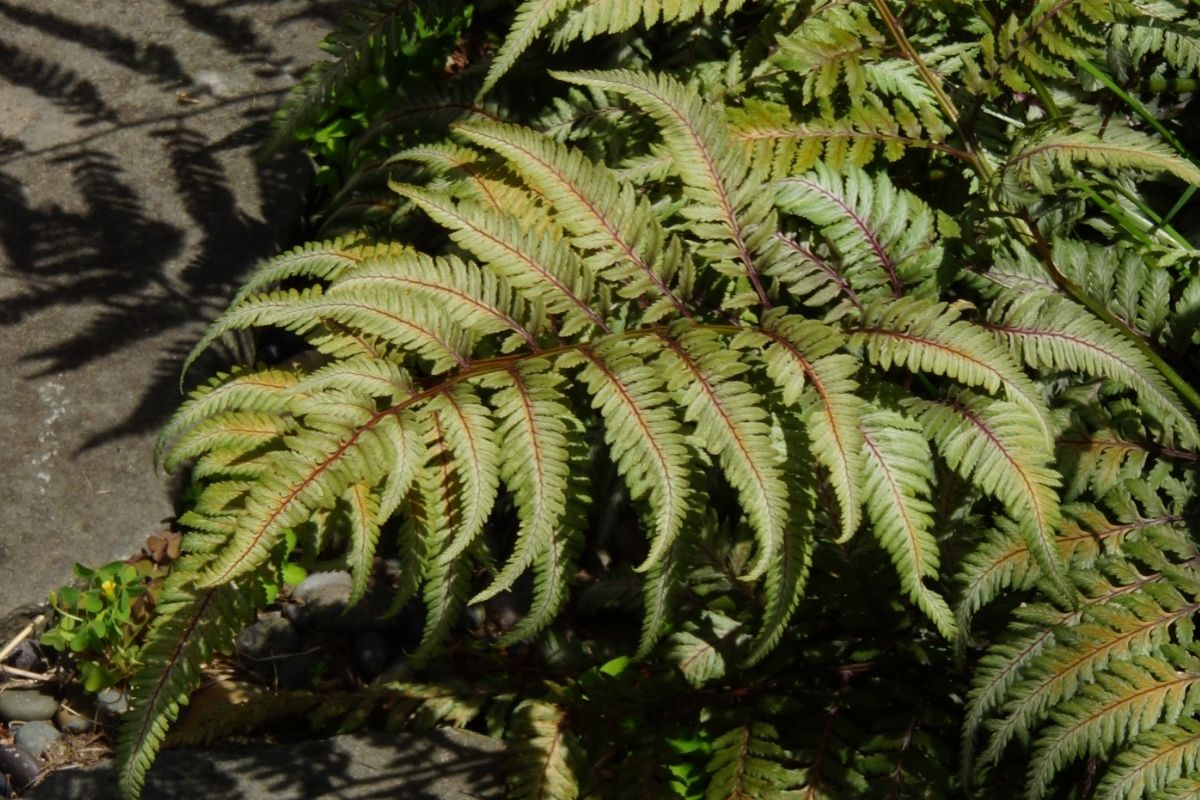
Coming in the form of ground covers as vines or ferns, variegated Indian holly fern requires partial shade or full shade to grow. It also requires a regular water supply for constant and healthy growth. Regarded as a very beautiful fern, this plant originated in Japan and China and features dark, shiny green fronds (leaves of ferns).
This fern stands erect and is deeply cut with a striking yellow stripe that travels down the center of each segment. When fully grown, it can form clumps reaching approximately 1,018 inches in height and a width twice this size.
In the lower and coastal south, variegated Indian holly fern is evergreen whereas it’s deciduous in the Middle and Upper South, where it shoots up in late spring.
REATED: Decorate Your Home and Garden With Amazing 23 Types of Fern Species
4. Variegated Kiwi Vine
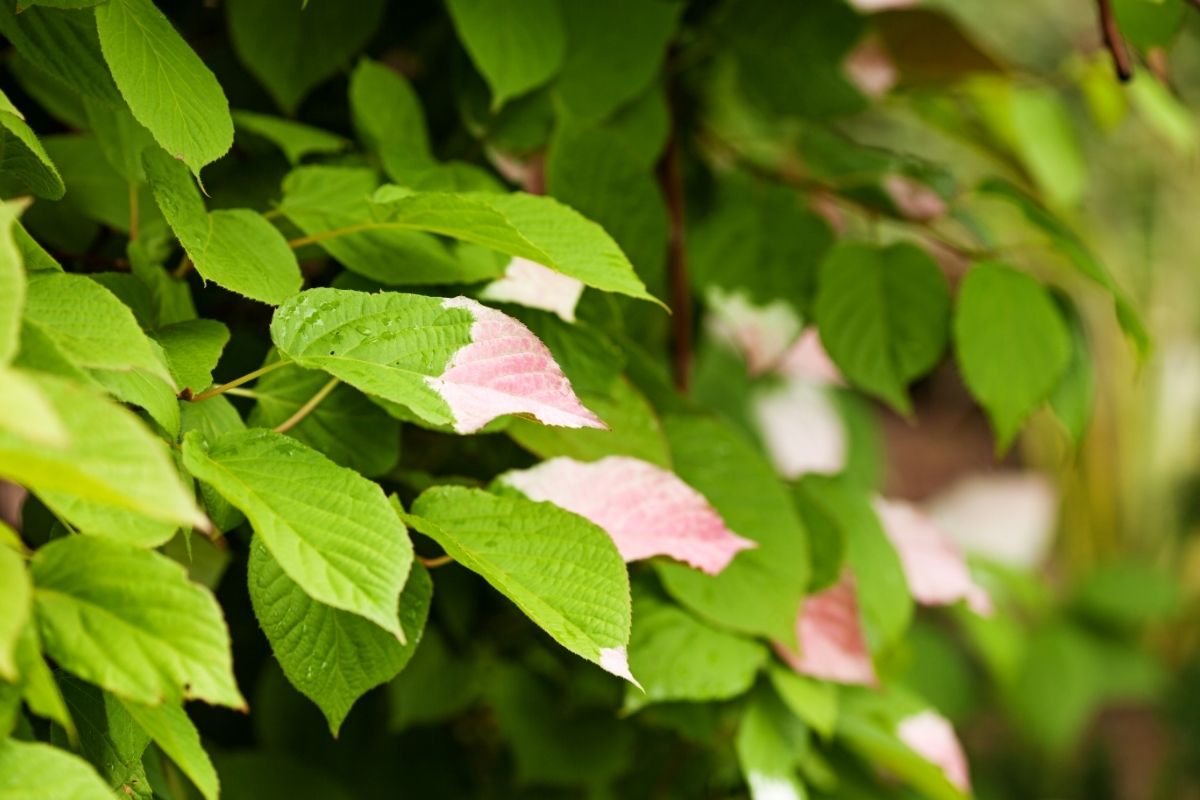
Another ground cover plant, the variegated Kiwi vine is a deciduous plant that needs full sun and partial shade along with moderate to regular water for healthy growth. The majority of Kiwi vines are treasured for the delicious fruit they bear.
This eastern Asian vine also sports flamboyant foliage as well. And, when it grows, it grows rapidly before reaching 15 feet or more with three to five-inch-long leaves. These heart-shaped leaves come in various colors from solid green to white splashes or pink and red marks.
The flowers of the variegated Kiwi vine are small, white, and fragrant, appearing in early summer. To allow the vine to grow, provide a robust support system and train new stems to grow into place. Prune late in the dormant season.
5. Velthemia Bracteata
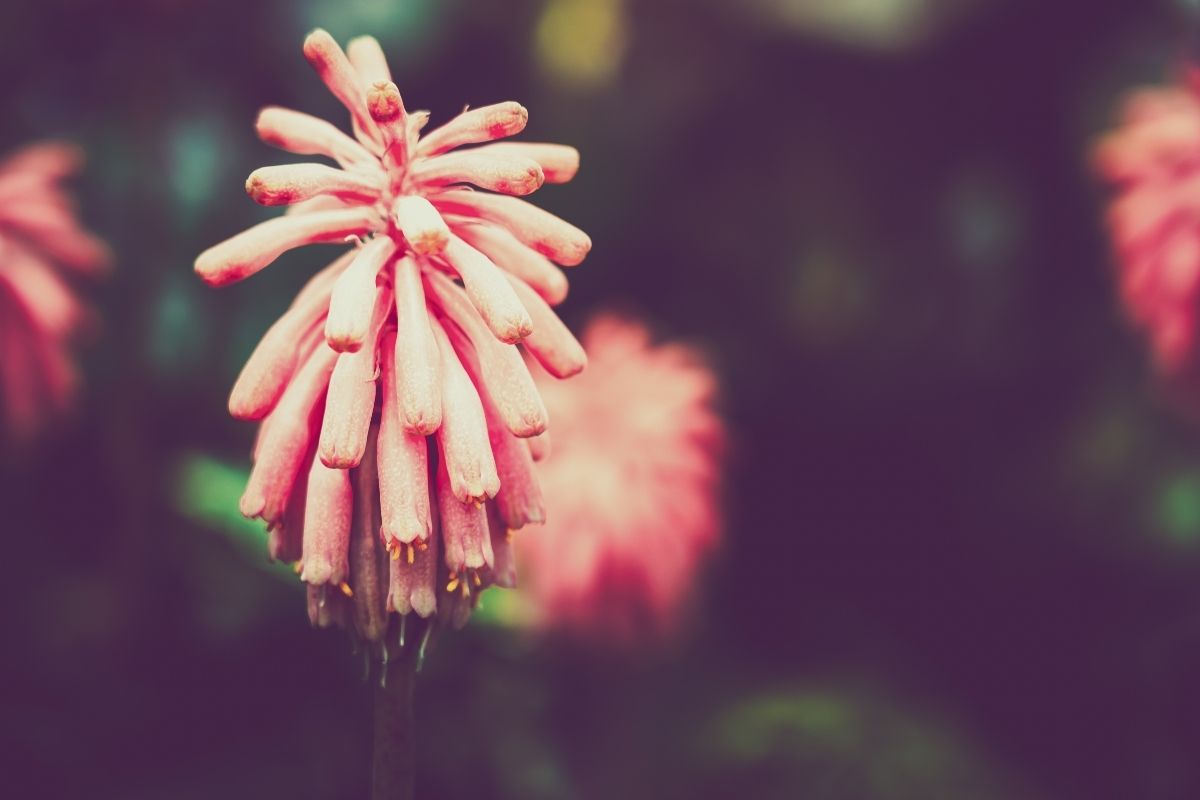
The velthemia bracteata is a perennial that grows under partial shade or filtered light. Regular water is also required for this handsome foliage to blossom. Native to South Africa, the velthemia bracteata’s bulbs produce fountains of glossy, green leaves that reach one foot in length and three inches in width.
However, brown-mottled flowers stem around 1 foot high in the winter or early springtime. These are topped with clusters of elongated pinkish-purple flowers that droop over with green-tinged petals. In late spring, the leaves turn yellow and die back before new regrowth in the fall.
For best results, plant this perennial in the fall in fast-draining soil. Most often, it is grown in plant pots.
6. Velvet Plant
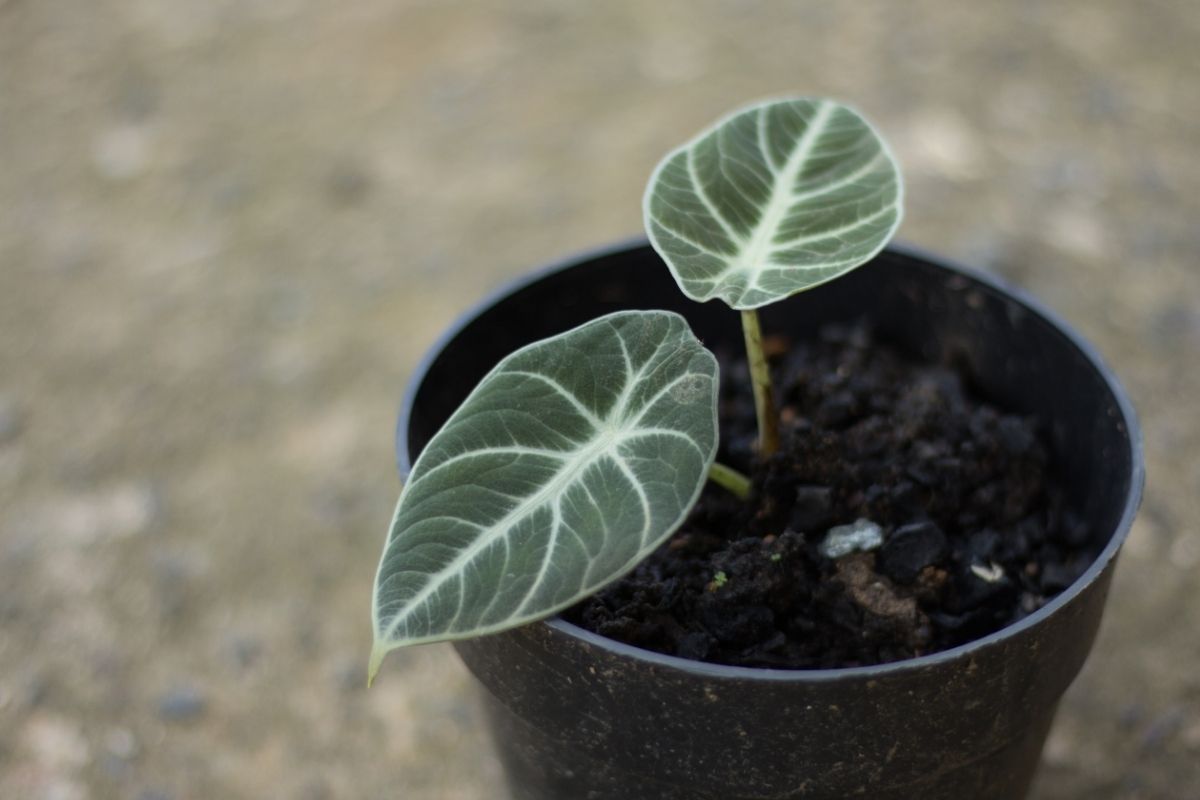
The velvet plant is an evergreen perennial that is regarded as a shrub. Different species of this plant require varying amounts of sunlight but they all need a regular supply of water. A native of the Old World tropics, the velvet plant often grows very striking and elegant colorful foliage.
In most cases, this is grown as a house plant but they can make for very interesting additions to flower borders in the backyard. For best results, velvet plants should be planted in well-drained, fertile soil outdoors.
RELATED: Alocasia Black Velvet: An Instructive Care, Propagation, and Watering Guide
7. Venus’s Flytrap
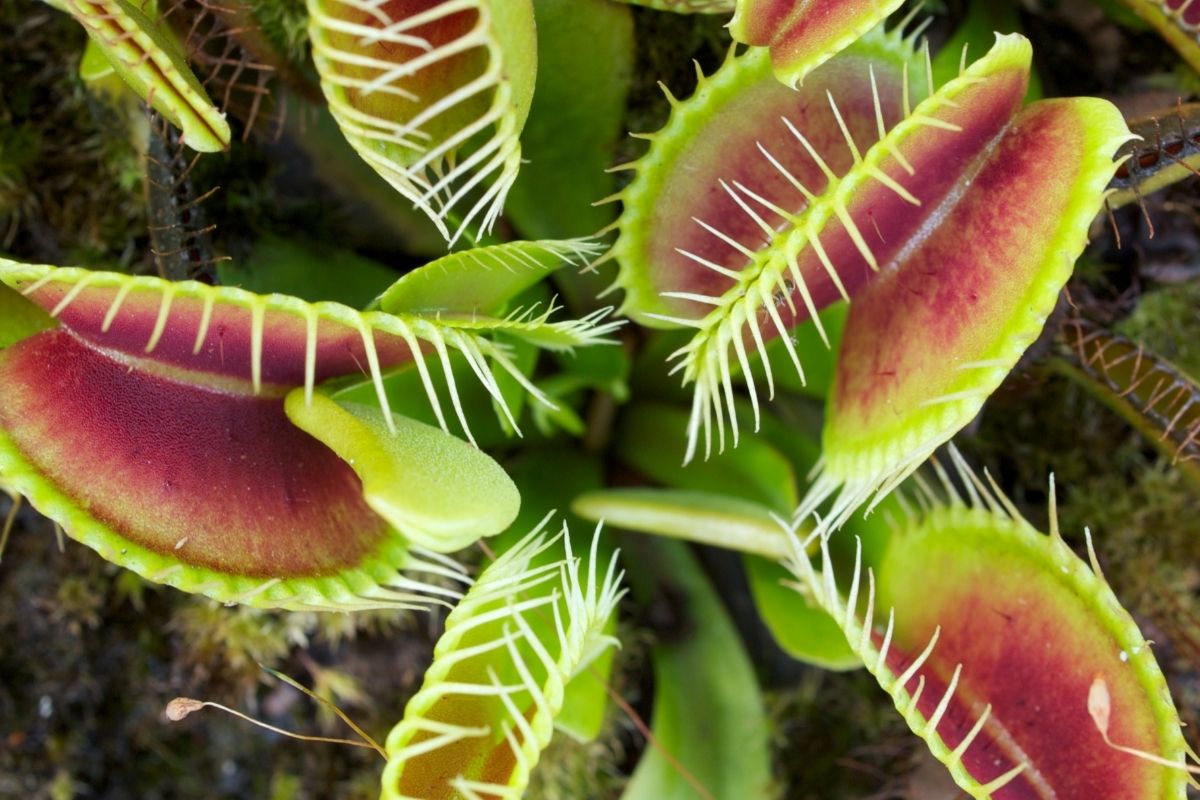
Arguably the most famous plant on our list today, Venus’s flytrap is a perennial that requires full sun and regular water. Made famous by TV and film, this plant does what its name suggests – it catches flies. Native to bogs of the Carolinas, Venus’s flytraps grow semi-evergreen leaves that can reach up to 56 inches long.
The tips of these leaves have two hinged lobes that form a one to two-inch-long trap. The extremity of these lobes is lined with bristles and glands that produce nectar. This nectar attracts insects before their movement triggers the minuscule hairs inside the trap.
Then, the trap closes quickly and ensnares the insect within. This mechanism is there for a reason. Because there are few nutrients in the boggy soil below, the flytrap gets its nutrients by catching insects.
Notoriously difficult to cultivate in usual garden conditions, Venus’s flytraps are best when left outdoors with moist, peaty soil and direct sunlight. Although carnivorous, these plants should never be fed with meat or anything else.
8. Verbena
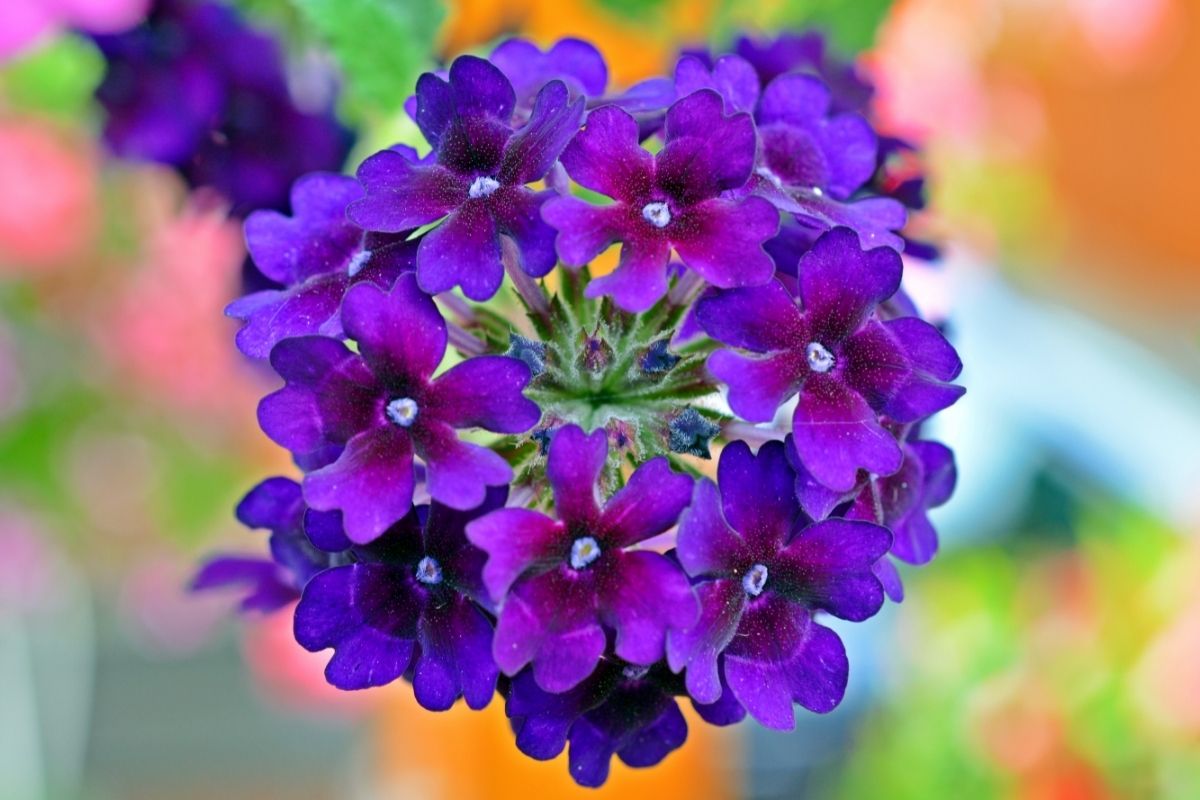
Both an annual and a perennial plant, verbenas thrive under full sunlight with a moderate amount of water. Verbena plants are a large group that includes some of the most colorful and easy-to-grow plants out there.
Most of these sport small clusters of petals with tubular blossoms starting in late spring and lasting until frost. Low verbenas are popular in hanging baskets but also make for great groundcovers and edging plants.
They can also be grown in containers or are often seen flowing over rock walls. For borders, you should use taller types of verbenas. The majority of these plants thrive in heat and are capable of tolerating drought conditions.
For best results, verbenas require well-drained soil and good air circulation.
9. Viburnum

RELATED: A Vibrant Variety: 24 Different Types Of Viburnum Plants
These deciduous plants can be grown as evergreen, shrubs, or trees. Regular water is needed to grow well along with partial shade and full, direct sunlight.
Viburnums are a large group of plants that tend to feature oval, attractive leaves with clusters of white, often fragrant flowers that attract butterflies. The blossoms of viburnums are usually followed by single-seeded, vibrant fruits that are well-loved by birds.
Most of these plants are grown for their floral display while others are renowned for their brightly, colorful, showy fruit offerings. A lot of the evergreen types of viburnums are also valued as foliage plants. Some can be grown as small trees too.
10. Viola, Violet, Pansy
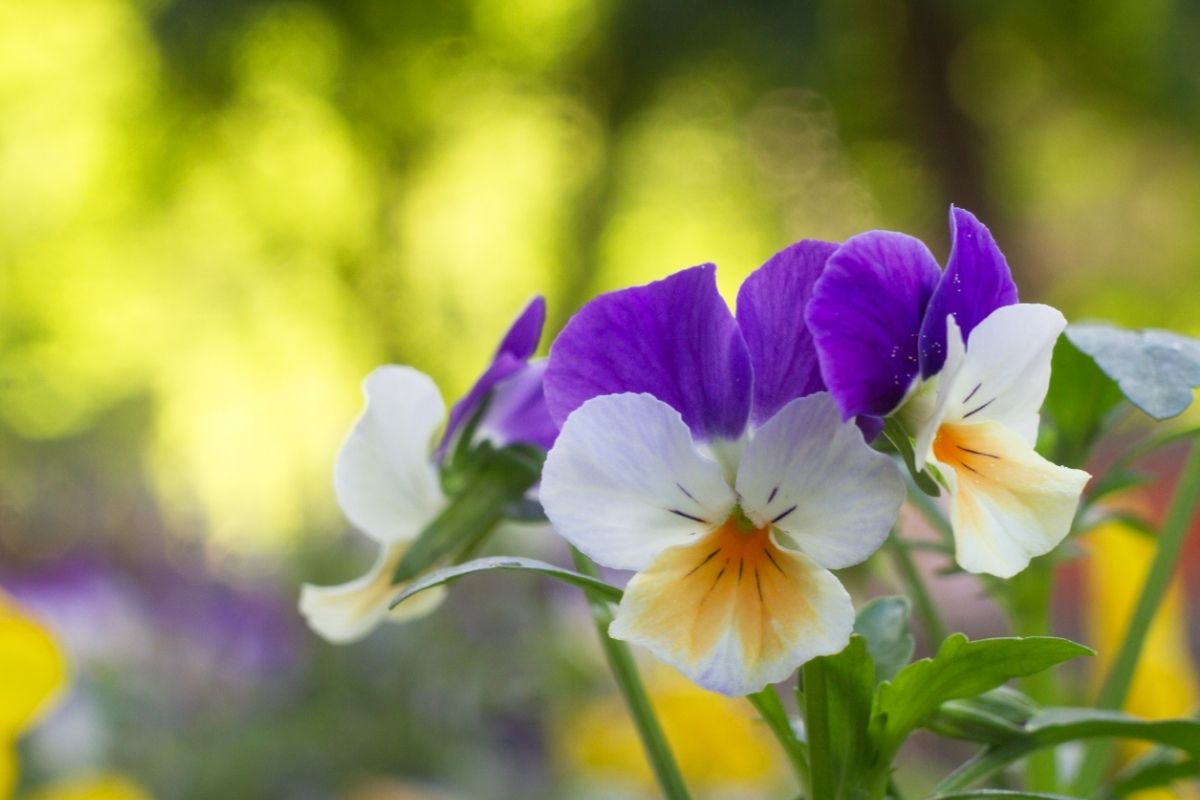
These are perennials and annuals with varying species requiring different amounts of sunlight. On the whole, violas, violets, and pansies require regular water. Botanically, almost all are perennials that belong to the genus Viola.
But, violas and pansies tend to be treated as annuals and are regarded as invaluable for fall, winter, and spring blooms, especially in midwinter regions.
These plants are generally used to bring an army of colors to borders and edging. They are also used as covers for spring-flowering bulbs and are often grown in containers. Violets, however, are often used for rock gardens or woodland plants.
11. Virginia Bluebells
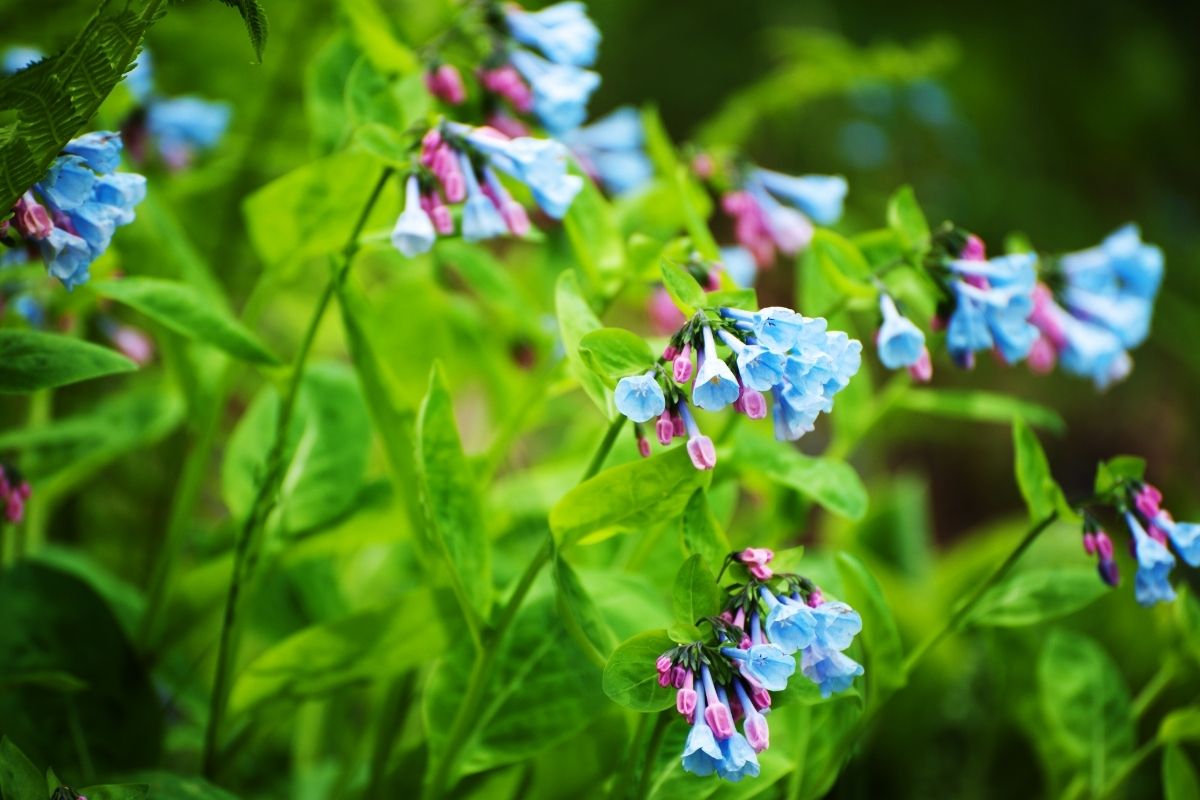
Virginia Bluebells are wonderfully charming plants native to the woodlands around the eastern U.S. Considered to be larger versions of Myositis (Forget-Me-Not) plants, Virginia Bluebells flower early in the year before going dormant soon after their seeds ripen.
This is usually before the middle of summer. The buds of this plant vary in colors from pink to lavender but, as the name suggests, then tend to open like bluebells and then boast a pink hue.
If your yard has naturalized daffodils or ferns, Virginia Bluebells can look wonderful alongside and bring another dash of color to the space.
The broad leaves of this plant have a bluish-green color to them and these typically grow loosely with clumps reaching up to 114 feet wide with 1-inch flowers.
12. Violet Trumpet Vine
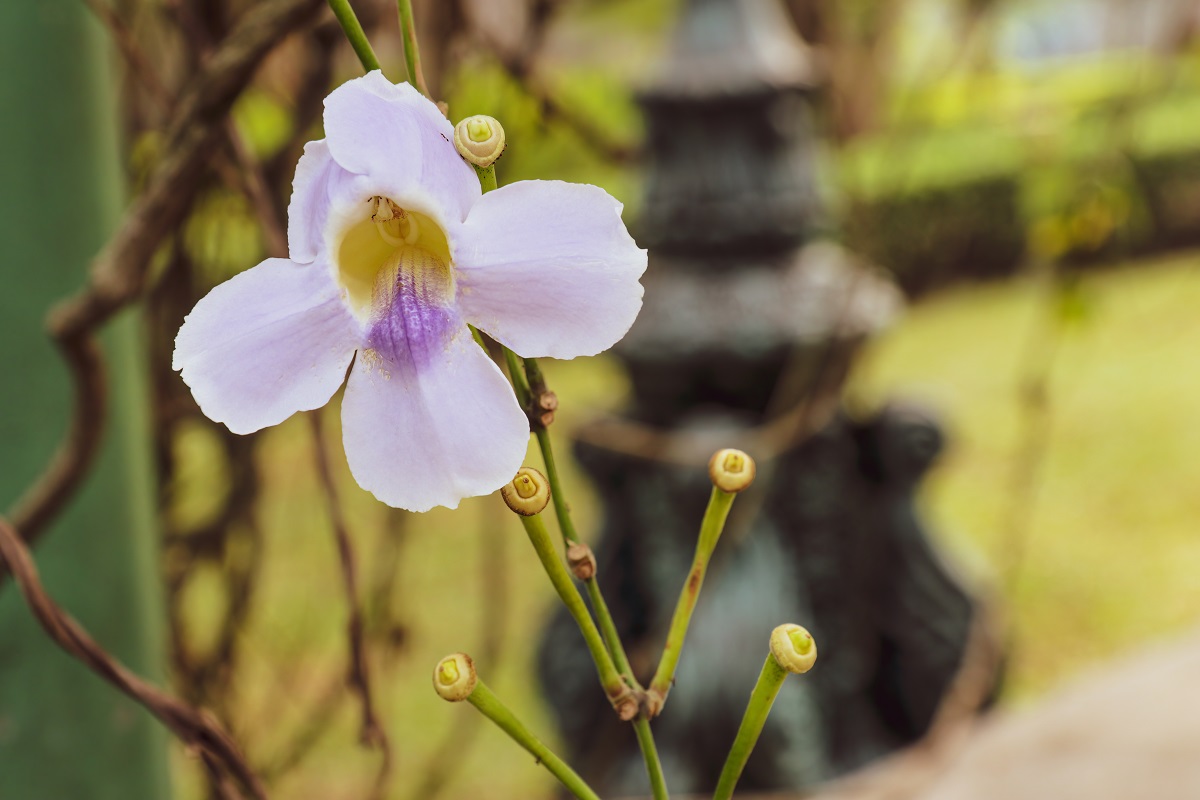
There are a few types of violet trumpet vines such as evergreen and vine/ground covers. These tend to thrive under full sunlight and partial shade and require a moderate to a regular water supply. This strong-growing vine is native to Argentina and Brazil and, once it grows, not much gets in its way.
It can clamber over just about anything but requires support when grown on walls. Its leaves grow to around 34 inches in length and are divided into a couple of dark, glossy markings with wavy margins on either side. Shoots also extend down and hang like curtains.
Violet trumpet vines usually bloom from late spring until fall. This is when they bear trumpet-shaped blossoms with flowers that boast either violet, lavender, or pale purple hues.
This is a sturdy and reliable vine for areas of Florida that may be too cold for the more tender begonia relative like the Pandorea. Make sure you prune this plant in late winter for disciplined growth.
Conclusion
Above are just a small selection of plants that begin with V. Others include Virginia Sweetspires, Voodoo Lilies, and Vrieseas. Many of these plants require specific conditions to grow properly but some are perfect options for bringing a mass of color to your borders if required.
Go through the entire alphabet and you will find plant names beginning with each letter. We just wish you all the luck in the world when trying to pronounce some of them!
We hope you learned something from this article, here are other articles that you can learn from:
30 Interesting Plants That Start With C (Including Pictures)







